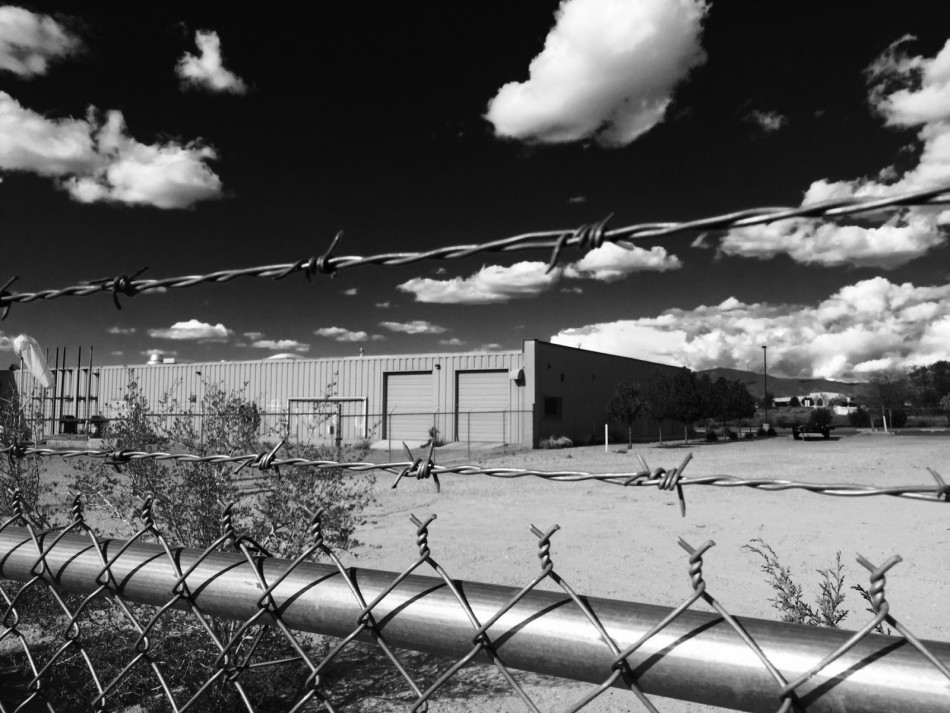
Bill McKibben writes in The End of Nature that "we have entered a new historical stage in which no square inch of Earth can any longer correctly be called ‘natural.’" Perhaps the point is that one cannot encounter a landscape at all without transforming it, which is to say that there is no such thing as a human encounter with a landscape that does not leave that landscape different and hence does not "end nature."
New Topographics in Santa Fe
On Friday, January 29th, 2016, Caterpillar announced the closure of its Santa Fe factory. In a move to save money earlier this year, Cat also shuttered plants across the country, including laying off 230 people in my hometown of East Peoria, IL. Not surprisingly, the Caterpillar plant was the first building I noticed when my wife and I relocated to Santa Fe in August 2015. There was something calming about the familiar font and design of the Caterpillar sign hovering just below the mountains. My childhood landscape, far removed from the desert hues of Santa Fe, was a swirl of chain-link fences and the disassembled parts of excavators, dozers and wheel loaders, all awash in royal yellow and carbon black.
Soon after the plant announced its closing, I found myself driving out to the factory just to stare at its uninhabited beauty. Something nostalgic and purposeful resided in this artifice of decaying industry. The juxtaposition of an industrial past I spent the majority of my life escaping from against the sweeping vistas of New Mexico, a natural beauty I worked so hard to obtain. A stark image of my past and future stood silent and motionless in the spring, desert winds.
As I stood there snapping photos, I was trying to conjure my memories of childhood, an attempt to enliven a life spent in the shadow of union strikes and an artificially constructed environment of parking lots and windowless factories. As the setting sun painted the sky with lavender and mauve, the Caterpillar building blended into the landscape, to where the natural and artificial were no longer discernable in my mind. Something about this structure felt like nature to me, more natural than the geographic contours of Santa Fe, formed from volcanoes long since extinguished.
This line of thinking brought my thoughts into conversation with the environmental philosopher Steven Vogel and conceptual artists Bernd and Hilla Becher. In his 2015 book, Thinking Like a Mall, Vogel argues against Aldo Leopold’s charge to think like a mountain, a meditation on where humans fit into nature. Rather, Vogel argues that humans should focus on the environment, the one we inhabit and the one we constructed, and jettison the false dichotomy between the artificial and the natural. One of my last research projects before leaving my position as a librarian at Denison University in Ohio, where Vogel teaches philosophy, was assisting him in tracking down images of and newspaper articles about the Columbus City Center, a mall torn down in 2009.
“The distinction between the natural and the artificial is ontologically meaningless: this is the central point I am trying to make… If the entire environment has become a built environment, would that not then mean that it was time to think about an environmentalism of the built environment?”
Vogel’s environmental philosophy of built environments has its ideological roots in “New Topographics: Photographs of a Man-Altered Landscape,” William Jenkins’s 1975 exhibit at the George Eastman House. This collection of images challenged our idealized images of nature and forced viewers to engage with the manufactured environment, devoid of humans. The only non-American photographers featured in the exhibit were a young German couple, the Bechers. Out of both a nostalgia for the industrial landscape of their childhood and an interest in documenting the beauty of structural patterns, they captured the abandoned structures dotting the countryside of post-World War II Germany.
In this series of photographs, I weave together my own images of the abandoned Caterpillar factory in Santa Fe with the words and thoughts of Steven Vogel and Hilla Becher, two individuals who also found beauty and nature in the world’s mills and malls.
Quotes from Hilla Becher are taken from a translated interview conducted by Joerg Colberg for Süddeutsche Zeitung Magazin in 2008.
Quotes from Steven Vogel are from Thinking Like a Mall (2015).
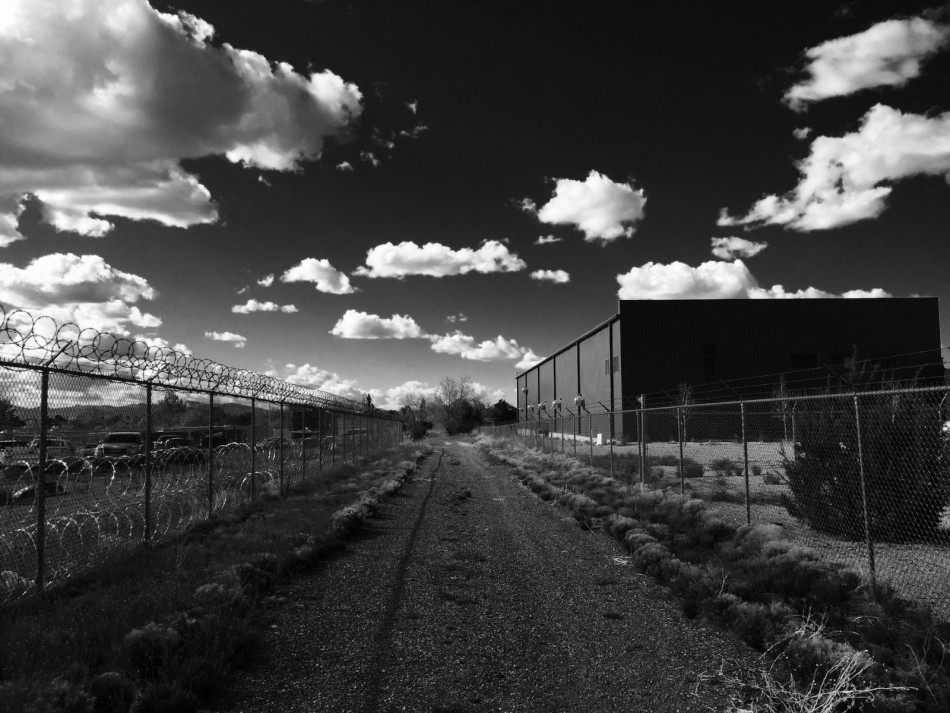
JC: But to only take photos of industrial architecture – such a decision has to be consciously made. HB: That’s what we ended up doing. In the beginning, Bernd wanted to preserve and bring back his childhood with those images. In the Siegerland, he grew up between ore mines and furnaces.
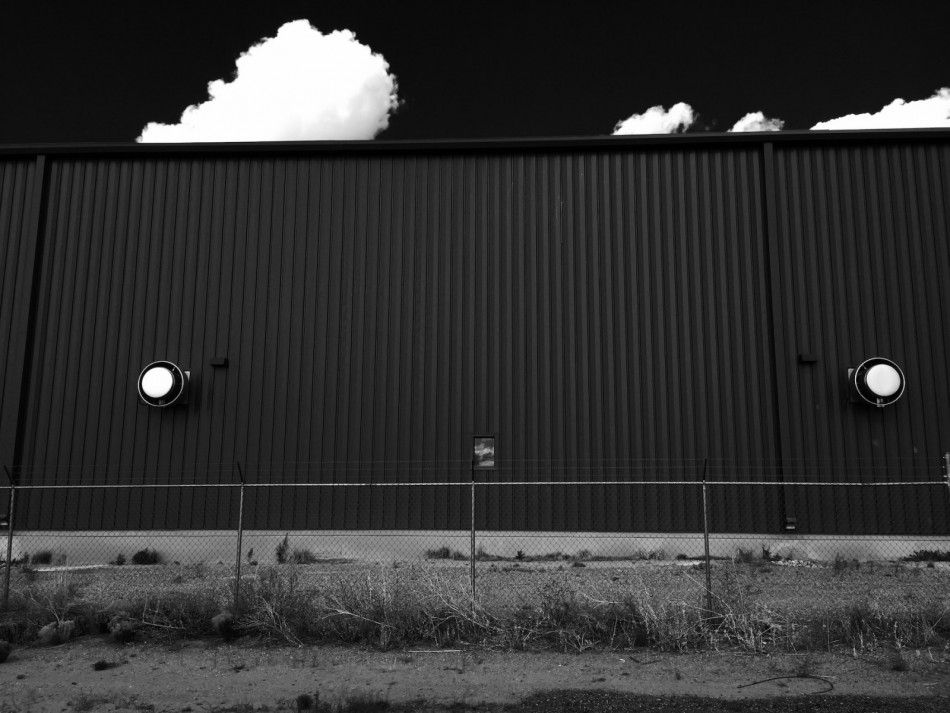
JC: But why furnaces and conveyor belts? HB: Because they are honest. They are functional, and they reflect what they do – that is what we liked.
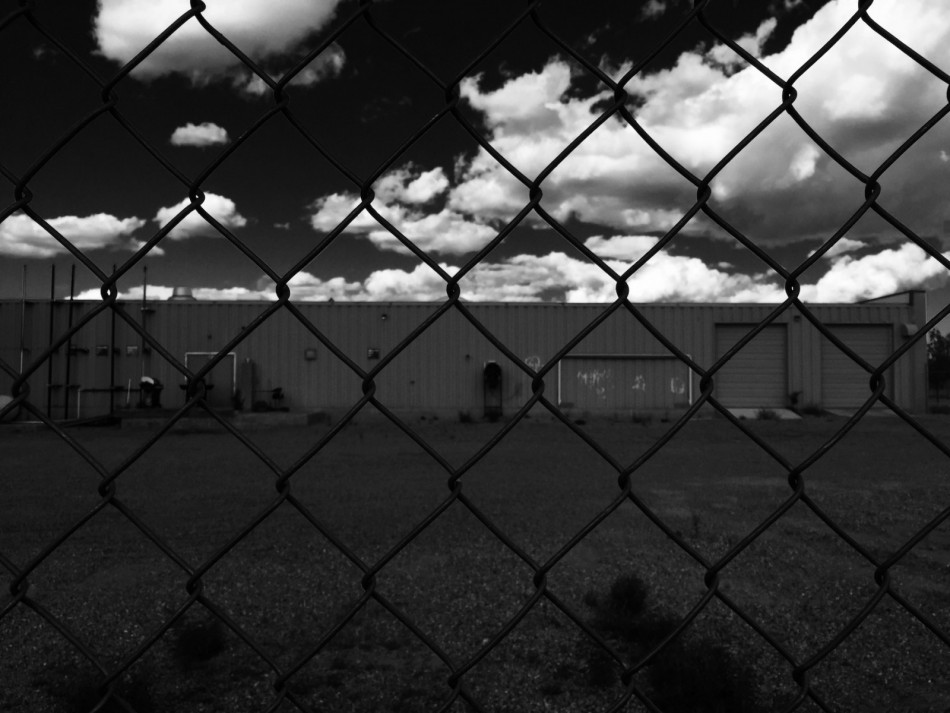
Steven Vogel: “If we are physical creatures whose fundamental character is to act in the world, and if action in the world is itself always physical, then this character of our artifacts—their reality and difference from our ideas and intentions—is not ‘beyond’ us any more than spider webs are beyond the spiders that spin and inhabit them.”
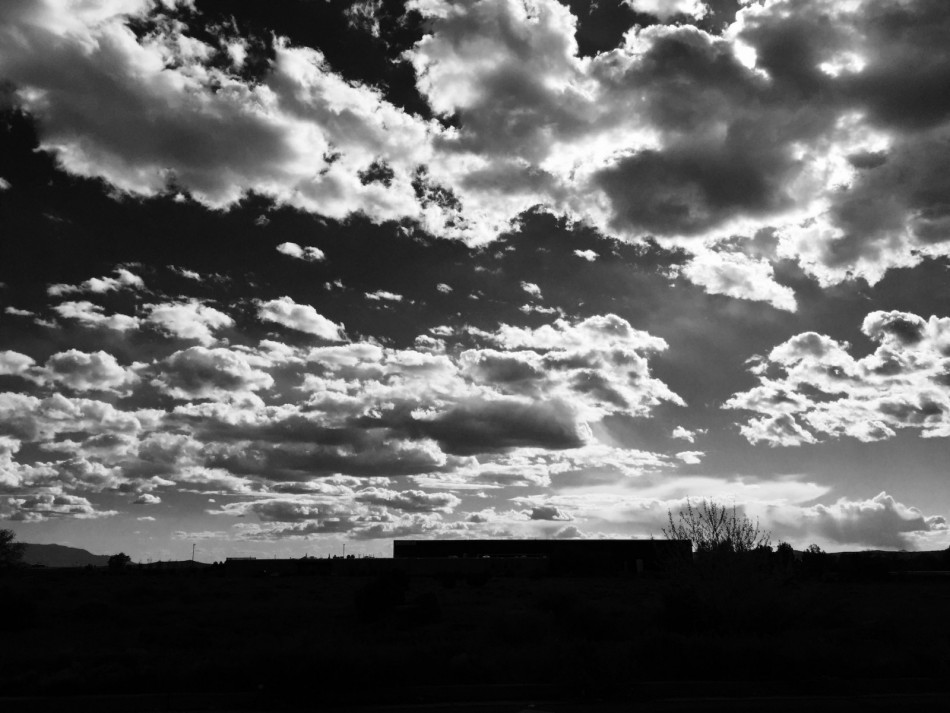
JC: So your goal is a lack of emotion? HB: In the end it was. When you take a photo of a lake behind which the sun is setting, then the sunset is the most important element of the photo. But we were only interested in the lake. Except that for us the lake was a coal storage tank or a blast furnace.
